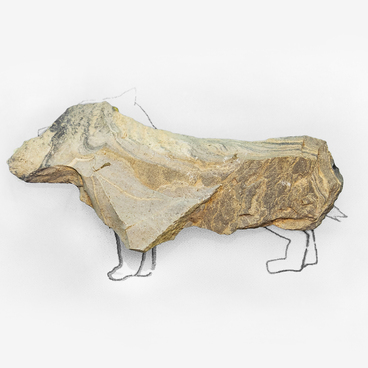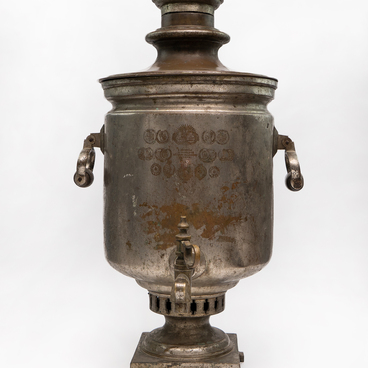The ceramic vessel from the museum’s collection is a household item of the early Middle Ages; it was dated approximately to the 11–12th centuries. The vessel in the form of a low bowl has a cylindrical shape. The neck of the vessel was rounded and slightly curved. The craftsman decided not to decorate the artifact, however, on the bottom, he left his mark — a kind of tamga.
The oldest ceramics, which were created in the Lower Amur region, were used by indigenous peoples to cook food on a campfire, primarily to boil marine and freshwater fish. Ceramics were usually decorated with various ornaments. Craftsmen often turned to the grid pattern, the so-called “Amur braid”, as well as to the image of concentric spirals-snakes, triangles, rhombuses and parallel lines.
Such ornamental patterns were applied with a special stamp, which was rolled on the damp surface of the vessel, or with a specially made sharp-toothed comb. Sometimes the craftsmen covered the vessels with red paint on top — mineral ochre, which was previously ground in paint grinding stone mills.
This ceramic vessel was made on a potter’s wheel. It is believed that such a craft was one of the main and widespread ones among the Amur Jurchens — an ethnographic group that lived in the Middle Ages on the territory of the Amur River basin. All the vessels of the Jurchen culture that were discovered by archaeologists are flat-bottomed. For monuments belonging to this culture, the presence of easel gray-clay pottery was mandatory. The composition also included a small admixture of fine sand.
When sand of various
grain sizes began to be added to the clay, the strength of the finished
products increased noticeably. A little later, people discovered a change in
properties after firing. Pottery, which was kept in a fiery furnace for a
certain time, acquired the hardness of stone, became waterproof and
fire-resistant. The very first products made of baked clay were various kitchen
utensils: plates, pots, huge jugs for water and grain, bowls. Such products were quite lightweight.






